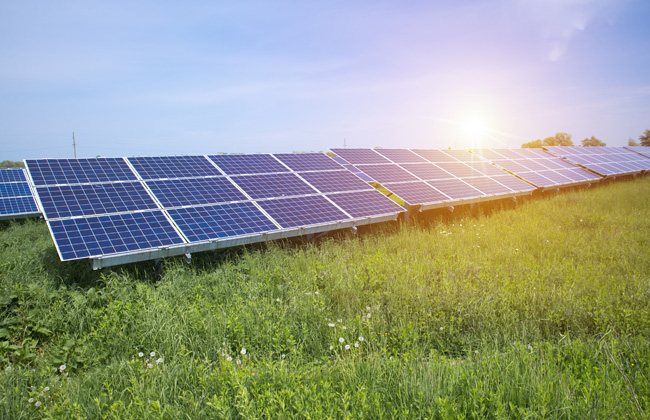10Kw Solar Panel System: Types of Solar Rooftop Power Systems
A typical rooftop solar power system has electricity-generating photovoltaic panels, commonly known as solar panels, on top of a house or building. But there is much more to it. 10Kw Solar Panel System is one of the best on them that you can use.
What is a Rooftop 10Kw Solar Panel System?
Solar panels: solar array is comprised of multiple PV (photovoltaic) cells that convert sunshine to electricity. Two varieties of PV Panels are there – whereas one comprise of “Polycrystalline Cells”, the other one contains “Monocrystalline Cells”. Polycrystalline cells are effectively a slice cut from a block of the element, consisting of a large number of crystals. They have a speckled reflective appearance and are very thick. They are less expensive to produce and more suited for Indian conditions. Monocrystalline cells are cut from one crystal of silicon- they're effectively a slice from a crystal. In appearance, they have a smooth texture and you will be able to see the thickness of the slice. These are slightly expensive to produce.
On-Grid System or Grid-tied System
These systems are designed to figure in conjunction with the grid or just place your electricity provider. The electricity you generate mistreatment this method is fed back to the grid. A web meter is put in in conjunction with this method to stay track of the electricity consumed by you versus what you generated and fed back to the grid ensuing in savings which get reflected in the bill. It does not work when the grid is down.

Off-Grid System
These systems store the electricity created by conversion in batteries and employ the keep energy by changing it back to AC as and once needed. The rising cost of other power sources and the increasing demand for electricity, especially in a high power cut or no grid areas, has resulted in increased demand for such systems. The reduction in battery costs over the years has additionally brought the system price down.
A 10 Kw solar panel system consists of the following structures -
Mounting Structure: there is a mounting structure which is the most critical part as it acts as the skeleton for the entire system; a sturdy structure will result in years of power generation as it needs to withstand strong winds and other natural forces. The type and orientation of the structure vary to a great degree depending on multiple factors associated with the location where the solar power system needs to be deployed. The structure for rooftop solar installation on a flat roof is completely different from that for a slanted roof. The height of your roof is another major factor which determines the composition and alignment of the structure. The quality of the material used has to be as per the MNRE (Ministry of New and Renewable Energy) specified norms. The structure needs to be made of galvanized iron, which is anti-corrosive making the solar power system last longer.
Installation: Lastly, but most importantly the installation of the solar power system needs to be done with precision in order to generate maximum electricity through the solar power plant. No two rooftops are the same therefore the process requires system design and careful supervision to ensure proper installation of the solar rooftop power plant.

Solar panels used in any solar power system should be installed facing South direction. The tilt angle of the solar panel should be between 8 to 33 degree in India, but it varies as per the height of the installation. Solar Panels in Brisbane must be grouted using anchor bolts or concrete foundation to ensure durability in rough conditions. UPS and batteries must be installed as close to the panels as possible to minimize DC transmission losses. One needs to ensure that the maximum permissible voltage is not exceeded when connecting the panels in the serie. There should be a minimum gap of 5 mm between two solar panels to allow for any expansion in materials. The solar panels being interconnected must be of the same type (mono or poly) and same power class. There should be no shade or shadow on the solar panels as this may lead to losses, the formation of hotspots, etc.
If you're a rich consumer, a 10Kw Solar Panel System like this might be all you need to get started then expand your system. 10 kW solar system generates an average of 40 unit in a day.
